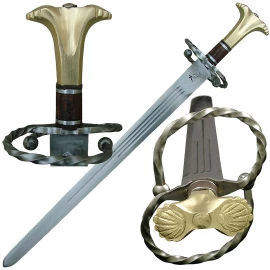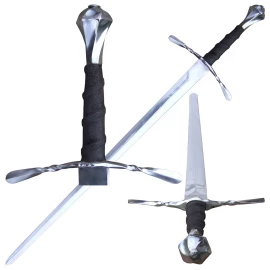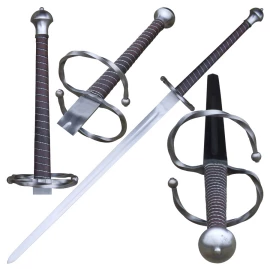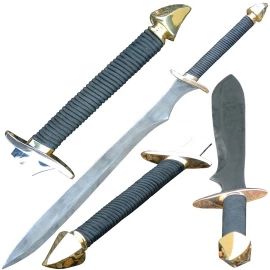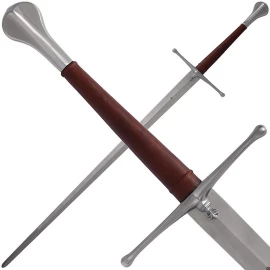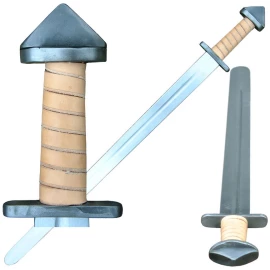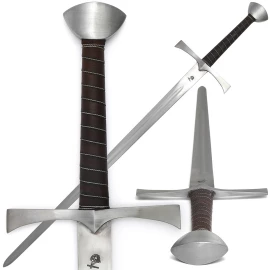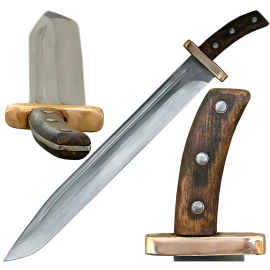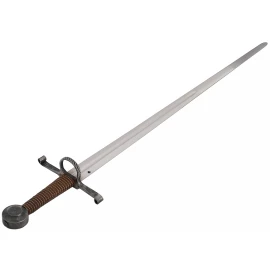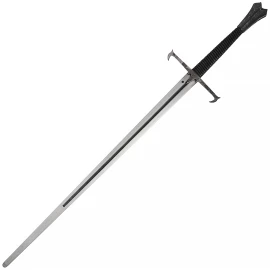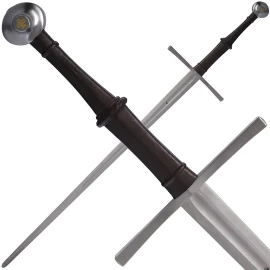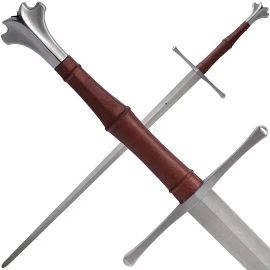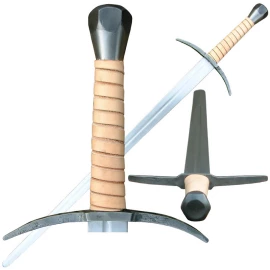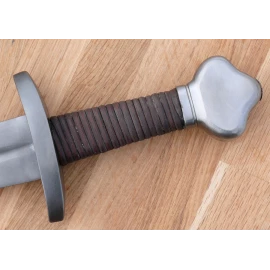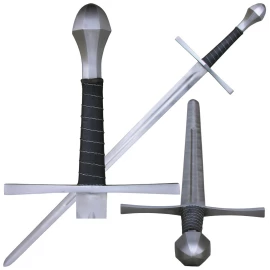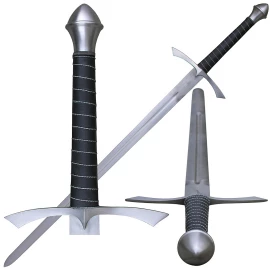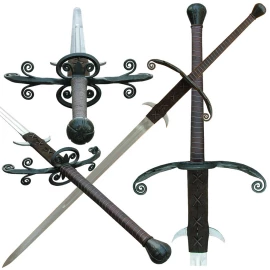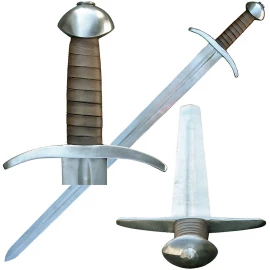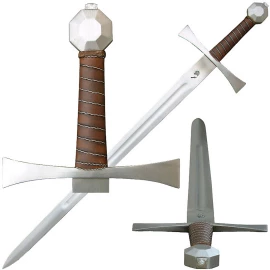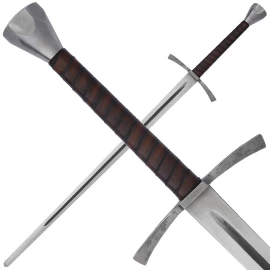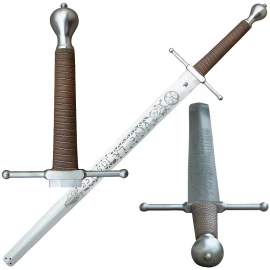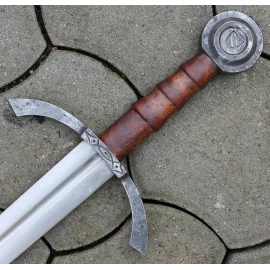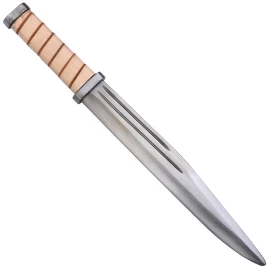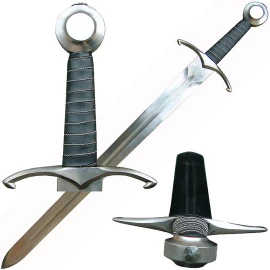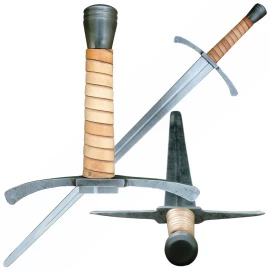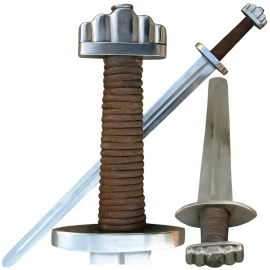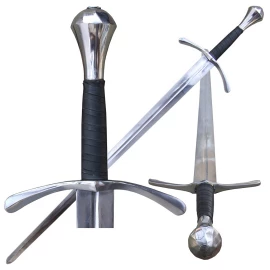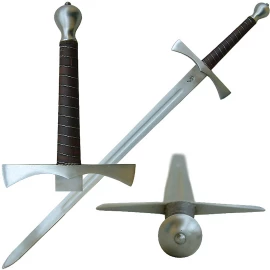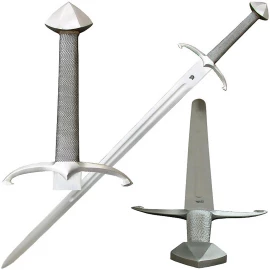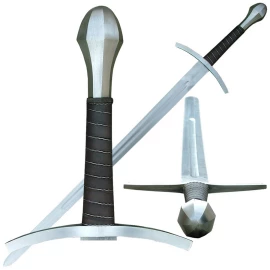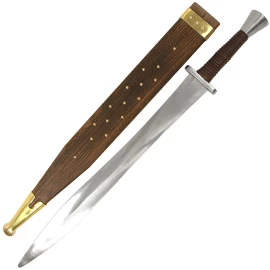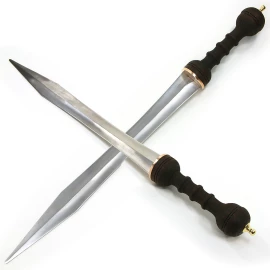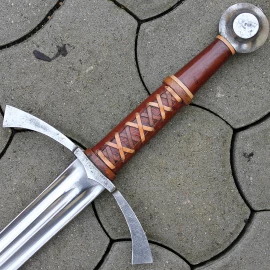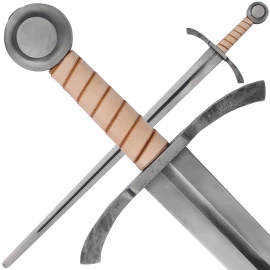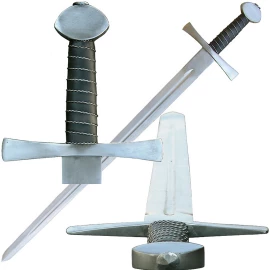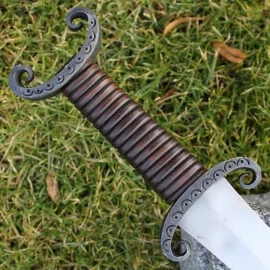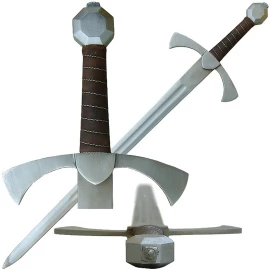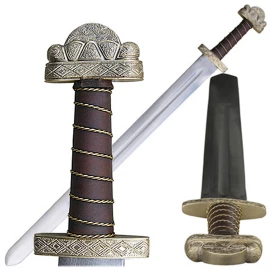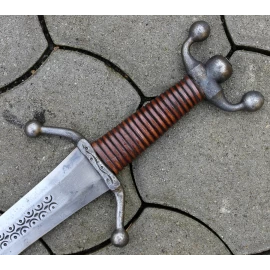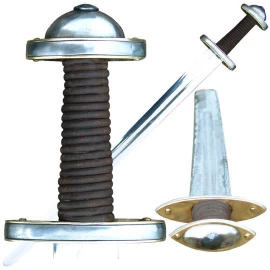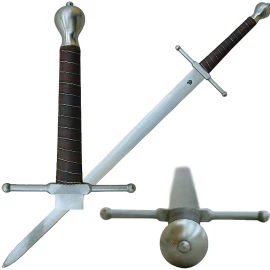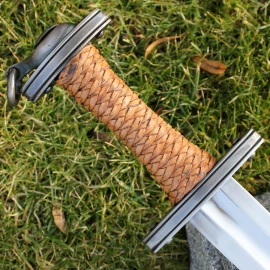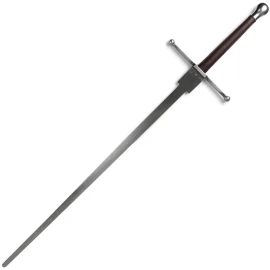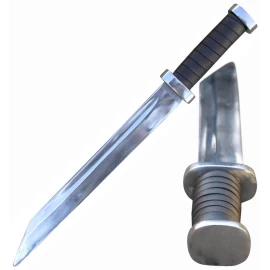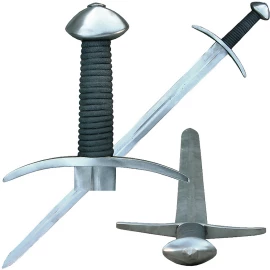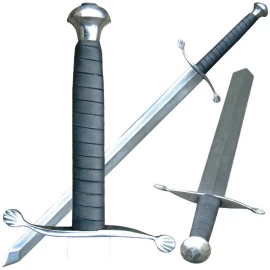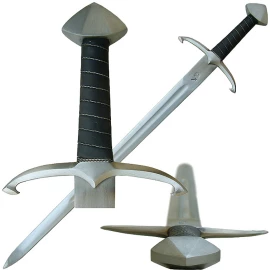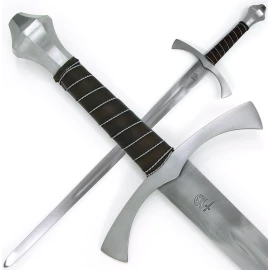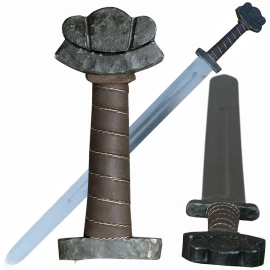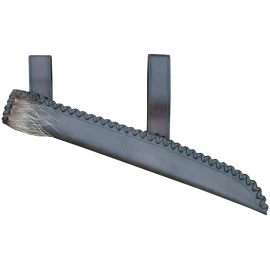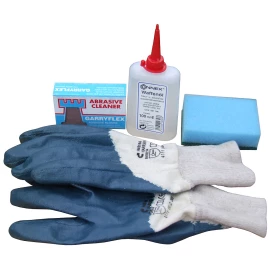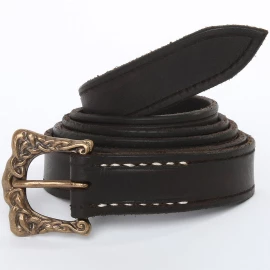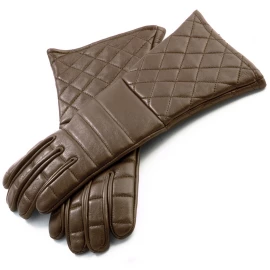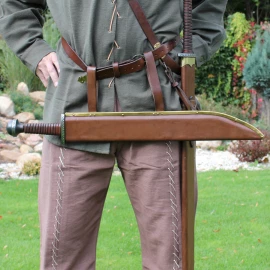Scramaseax Swarta, class B
3xA seax in modern times is often called scramasax or scramaseax,from scrama "wound" (cf. German Schramme "flesh wound", Dutch schram "scar") and seax (cf. German Sahs "dagger"). However, as the word 'scramasaxi' is only used once in early medieval literature (In Gregory of Tours 'History of the Franks'), the general use of the term when referring to all short knives of this type is erroneous. The Saxons may have derived their name from seax (the implement for which they were known). The seax has a lasting symbolic impact in the English counties of Essex and Middlesex, which both feature three seaxesin their ceremonial emblem. Source: Wikipedia More information...
Scramaseax Swarta
Sword class B
- Total length approx. 728mm
- Blade length approx. 580mm
- Measurements of the cross guard approx. 70 x 18 x 10mm
- Width of the blade at the guard approx. 42mm
- Thickness of the blade at the guard approx. 5mm
- Width of the blade 310mm from the blade tip approx. 49mm
- Thickness of the blade 310mm from the blade tip approx. 5mm
- Width of the blade 100mm from the blade tip approx. 34mm
- Thickness of the blade 100mm from the blade tip approx. 5mm
- Thickness of the blade edge approx. 2.8mm (blunt battle-ready version)
- The point of balance (POB) is located approx. 15cm from the cross guard (blunt battle-ready version)
- Weight approx. 1160 g (blunt battle-ready version)
- Blade from spring steel DIN 54SiCr6, oil quenched at approx. 53 HRC
Each scramaseax is individually manufactured. That is why the above specifications can vary slightly from weapon to weapon.
Made in the Czech Republic.
Please read our: Directions for the use of bladed weapons.
We are here for you









